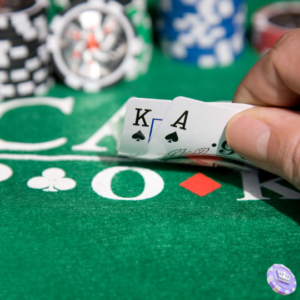How does roulette work in simple terms: a dealer spins a wheel while a small ball circles the rim and drops into a numbered pocket, determining which bets win. Brief notes on play cover how does a roulette wheel work, how does roulette payout work and explain roulette table layouts, with common inside and outside bets and the jeu de roulette terms used in online casinos.
Understanding roulette: the game, terms, and what you need to know before you play
Brief overview of the essential concepts, layout and terminology that let a player recognise table actions, bet types and the role of the wheel before staking real money.
The table and the wheel: what is a roulette game and how you play
Roulette combines a numbered wheel and a betting layout where chips are placed to predict outcomes. The wheel is spun while a small ball travels in the opposite direction until it settles in a pocket.
The numbers 1–36, 0, and 00 on the roulette wheel
The wheel contains pockets numbered 1–36 alternating red and black, plus one or two green zeros. The pocket where the ball lands determines winners and losers for that spin.
From the dealer to the player: roles at the roulette table
The dealer manages the spin, accepts and clears bets, pays winners and enforces table rules. Players place chips on the layout to represent chosen bets.
Every time you play and the idea that each spin is independent
Each spin is a separate random event. Past results do not alter the probability of future outcomes, which underpins the casino advantage.
You know how the game works: understand the terms and basics
Key terms include straight up, split, street, outside bets, house edge and minimums. Familiarity with these terms simplifies decision making at the table.
Inside and outside bets: what each means and the same table layout
Bets are grouped by their position on the layout: inside bets target specific numbers, outside bets cover larger sets or attributes like colour.
- Inside and outside bets explained for the player with all examples: Inside examples: straight up, split, street, corner, six line. Outside examples: red/black, odd/even, high/low, dozens and columns.
- Outside bets and even money bets: black or red, odd or even: Even-money wagers pay roughly 1:1 but are affected by zeros; they offer higher hit frequency but lower payouts than inside bets.
- The inside bets: straight, split, street, corner, and the two lines: Straight pays highest (typically 35:1). Split, street, corner and six-line pay progressively smaller ratios while covering more numbers.
Table limits and etiquette: the amount you bet and minimums
Casinos post minimum and maximum stakes. Limits may differ between inside and outside areas and are enforced by staff.
- Minimum and maximum per table, and the terms conditions that apply: Limits are visible on a sign or layout. They determine the smallest and largest permitted wagers and follow house terms.
- Your chips on the table and when the dealer will close betting: Place chips clearly within chosen boxes. The dealer announces the close of betting; wagers placed after that may be void.
- Before you bet, please know how to place and move your chips: Buy chips at the cage, place them on the marked areas and avoid touching chips after the dealer signals the end of betting. Markers show reserved bets when players leave the table.
How a roulette wheel works: mechanics, layout, and fairness in Canadian casinos
Brief technical overview of wheel parts, differences between single and double zero formats, and how fairness is maintained both in physical casinos and online platforms in Canada.
Wheel components: the wheel and the ball, pockets, and deflectors
The sequence of numbers on the rim is fixed and designed to balance high and low values, creating an even distribution of outcomes around the cylinder. Physical wheels follow established patterns that vary by style.
Spin speed, ball momentum and table tilt all influence the immediate outcome, but small variations produce effectively random results; each spin remains independent from the previous one.
Regular servicing, calibration and inspections prevent mechanical bias. Licensed Canadian casinos maintain records and replace worn components to preserve integrity.
Single-zero vs double-zero: European vs American style roulette
Single-zero wheels typically offer a lower house edge than double-zero wheels, altering expected returns over many spins.
Probability for any specific pocket equals one divided by the total pockets; adding a second zero reduces hit probability for standard bets.
Some Canadian venues and online sites list wheel type and table limits; checking those details helps in selecting preferred odds.
Fairness and RNG in online games with live dealers in Canada
- Roulette Online & Streamed: Live dealer streams replicate physical tables with real wheels and balls handled on camera by a dealer in real time.
- Independent Spins: Recorded outcomes and audited game histories allow verification that spins are not correlated.
- Certified Casinos: Licensed operators employ certified RNGs for virtual games and publish audit statements, terms and privacy details required by Canadian regulators.
The roulette table explained: inside and outside bets, limits, and table layout
The roulette table combines a numbered grid, labelled outside betting areas and clear limits to guide play. The layout shows where each chip must sit and how different bets are grouped on the felt.
Table layout the player sees: numbers grid and betting areas
- Roulette zones: The central grid lists 1–36 in three columns and twelve rows. Outside areas include red/black, odd/even, 1–18 and 19–36, dozens, and column bets.
- Called bets: Dealers accept bets placed verbally on wheel-adjacent numbers in high-limit or European-style games.
- Dealer’s role: Dealers place a marker to indicate winning numbers and ensure correct chip placement, removing losing chips after each spin.
Inside and outside: how you can bet and for which outcomes
- Outside bets: These include red/black, odd/even, and high/low. They pay roughly 1:1, reflecting near 50% probability reduced by zero pockets.
- Column and dozen bets: These cover twelve numbers and typically pay 2:1. They offer broader coverage with lower payouts compared to single-number wagers.
- Inside bets: These include straight bets, splits, streets, and corners. Neighbour bets target wheel proximity rather than table adjacency.
Minimums and limits: amount you bet per area and per spin
- Minimum bets: Tables specify minimums for both inside and outside areas. Notices indicate whether the minimum applies per bet or to the total inside investment.
- Bet enforcement: Dealers enforce posted minimums and maximums, and may refuse bets that exceed limits or violate rules.
- Bet lock: Bets placed after the dealer announces “no more spins” are void. Chips must remain until the dealer confirms the result and clears the table.
Odds and payouts: how roulette odds and the payout work for the player
Brief overview of odds and payouts clarifies how probabilities, wheel type and bet choice determine expected returns and short-term variance.
Odds explained: what affects the odds and the house edge
- Odds & house edge: Probability depends on the total number of pockets and specific bet covered. Wheel configuration and zero pockets impact the casino advantage.
- House edge by wheel type: Single-zero wheels carry a house edge of 2.70%. Double-zero wheels raise the edge to 5.26%. Over many spins, the expected loss equals the house edge multiplied by total stakes.
- Randomness: No betting system alters the expected value. Mechanical bias can create deviations, but online RNG certification and wheel maintenance minimize these possibilities.
- Independence of spins: Each spin is independent and carries identical probabilities. Short-term sequences do not affect the statistical chances of future outcomes.
How does roulette payout work: tables, ratios, and examples
- Inside & outside payouts: Payout ratios reflect inverse probability approximations: straight up 35:1, split 17:1, street 11:1, corner 8:1, six-line 5:1, column/dozen 2:1, and even-money bets 1:1.
- Winning example: A single $10 straight-up on a single-zero wheel returns $350 plus the original stake. The expected value accounts for both the payoff and the low hit probability.
- Consecutive wins: Consecutive wins do not change the odds. The probability of future spins remains constant regardless of run length.
Bankroll and variance: what you can expect and how to plan
- Bet size & session duration: Stake size and session length influence variance. Smaller, consistent bets reduce volatility while larger wagers increase the potential for swings.
- Risk & reward: Higher payouts have lower probabilities. Risk management balances potential returns against the likelihood of losses.
- Factors affecting results: Table limits, wheel type, house edge, and variance together determine long-term outcomes. Disciplined bankroll management influences how results translate into gains or losses.
Betting strategies and risk: progression systems, limits, and realistic outcomes
Brief overview of common wagering systems, their practical limits, and the risks involved when attempting progressive approaches. Focus is on realistic outcomes rather than promises of guaranteed wins.
The Martingale betting strategy: how it works and real-world limits
- Martingale strategy: The strategy involves doubling the bet after each loss and returning to the base stake after a win. The goal is to recover prior losses plus a small profit.
- Table maximums: Table limits cap recovery, making sustained losing runs impossible to recover from. Limits and finite bankrolls mean theoretical recovery often fails.
- Exponential exposure: Doubling bets exposes the player to larger, concentrated losses after consecutive losses.
Other systems: D’Alembert, Labouchère, and flat betting
- D’Alembert: A fixed unit system that adjusts bets based on wins or losses.
- Labouchère: A cancellation list system that modifies stakes based on a series of numbers.
- Flat betting: A system where stakes remain constant throughout the session.
Progression betting system pros and cons for the player
- Pros: Provides discipline, clearer stake plans, short-term structure.
- Cons: Does not change expected value, increases losses, vulnerable to limits.
Betting strategies and variance: the same odds each spin
Variance governs outcomes; strategies do not alter the underlying probabilities. Short-term swings can mislead but long-term expectation remains unchanged.
The idea that strategies beat the game vs the long term math
No staking plan eliminates house edge. Strategies may manage risk appetite but cannot convert a negative expectation into a positive one.
Practical tips: managing your chips and choosing the right table
- Wheel & table choice: Choose formats that align with your risk tolerance and avoid tables with rules that increase the casino advantage.
- Bet smarter: Set fixed loss and time limits before play. Treat systems as entertainment rather than profit guarantees.
- Know when to stop: Chasing losses increases harm. Predetermined stop points help preserve bankroll.
Playing in Canada: casinos, online options, and player protections
Brief overview of licensed venues, online offerings, and the safeguards that support safe play across Canadian jurisdictions.
Where to play: Canadian casinos and online games that offer roulette
- Live roulette tables: Major land-based casinos in Ontario, British Columbia, and Quebec offer single-zero and double-zero roulette. Table limits and formats are listed in advance.
- Online roulette: Provincially regulated platforms provide live-dealer streams and RNG-based tables, ensuring fairness and compliance with local regulations.
- Guides and resources: Guides outline table etiquette, bet types, and payout mechanics. Comparisons help players find venues offering lower house edge options.
Responsible gambling: resources and policies in British Columbia and beyond
- Problem gambling resources: Self-exclusion, counselling, and public education programs are available through provincial resources. Operators display responsible gambling options and support access to services.
- Terms & privacy: Terms of use and privacy policies explain account rules, withdrawal procedures, and data handling. Compliance with provincial standards is mandatory.
- Offers & rewards: Promotions and loyalty points have wagering requirements and expiry terms. Clear bonus conditions are disclosed in line with Canadian regulations.
Player basics: safety, payments, and fair play
- Payments & withdrawals: Payment methods vary by operator and province; processing times and verification steps are outlined in site terms.
- Chips & balances: Physical chips are tracked at the table, while online balances reflect wagers and settled outcomes immediately.
- Real money or fun: Responsible bankroll management determines if real-money play is appropriate. Demo modes offer risk-free practice for new players.




